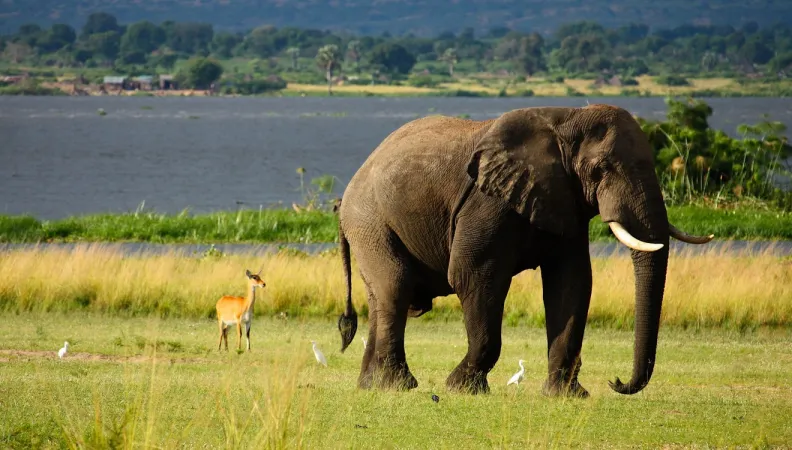Share the page
Biodiversity: A Victim of Climate Change...and Source of Solutions
Published on

World leaders have reached a historic agreement to protect 30% of the planet for nature by 2030, at COP15 in Montreal - the second of two major events in recent weeks, aimed at preserving biodiversity and tackling climate change. Increasingly, experts are discovering links between the two. Far from being distinct challenges, progress in the preservation of biodiversity can help humanity cope with climate change, and vice versa. We explore how.
The link between climate change and biodiversity has become increasingly clear, particularly with the 2021 “Biodiversity and Climate Change” report, by 50 scientists from the Intergovernmental Panel on Climate Change (IPCC) and the Intergovernmental Science-Policy Platform on Biodiversity and Ecosystem Services (IPBES). To address the climate challenge, it is necessary to protect and restore ecosystems and, conversely, to protect the biosphere, it is essential to limit the increase in average temperatures.
“The causes of these two phenomena are the same and are linked to our production and consumption patterns. So, we need to address these two threats simultaneously,” says Sandra Lavorel, CNRS Director of Research at the Alpine Ecology Laboratory in Grenoble and member of IPBES.
Further reading: “Every Year, $500 Billion Goes to Projects that May Be Destroying Nature”
Nature, one of the first victims of climate change
Climate change is pushing a number of species towards the poles, and contributing to their extinction. It exacerbates water-related risks (such as water stress, droughts and floods) and leads to the degradation of natural environments which are stretched to their limits of adaptability. They include coral reefs, wetlands, tropical rainforests and glaciers.
Conversely, with the degradation of ecosystems, carbon that has long stored in forests, peat and ice shelves, is increasingly released into the atmosphere, and with it, vast amounts of greenhouse gases, which in turn exacerbate climate change.
Ecosystem degradation also poses a threat to human societies. “The daily subsistence of the most vulnerable 40 or 50% of the eight billion of us depends directly on ecosystems,” says Gilles Kleitz, AFD’s Executive Director for Sustainable Development Solutions. “When they break down, people eat less well, develop more diseases, their homes are flooded. Biodiversity is a key development issue.”
Further reading: COP15: What's at Stake in the Search for a New Global Biodiversity Framework
The perils of climate solutions that harm biodiversity
As the joint IPCC-IPBES report points out, some solutions that have succeeded in mitigating climate change have proven harmful to biodiversity and people’s well-being. Hydropower dams for example, may damage water quality due to changes in sediment loads; wind turbines can get in the way of migratory birds; and certain tree monocultures can be harmful if the species is or becomes invasive, especially when they replace non-forest ecosystems. In savannahs and grasslands, which have their own particular ecosystems, well-intentioned tree-planting schemes are contributing to what one study on Brazil’s Cerrado region, calls an “impending ecological disaster.”
Nature, an actor in the climate balance
It is essential to reduce CO2 emissions, which is one of the major objectives of the Paris Agreement, in particular by changing production systems. But it is not sufficient. Another priority is to protect and restore nature, with a conservation target of at least 30% of terrestrial and marine ecosystems by 2030, which was reportedly agreed at COP15.
The more we increase the amount of protected and restored areas, the more people – and the climate – will benefit, particularly given the role that nature plays in carbon storage. According to the results of the Global Carbon Budget 2022, about half of greenhouse gas emissions from human activity is absorbed by land and ocean ecosystems, which play an essential role as “carbon sinks”.
Further reading: With a fifth of the world’s mangroves, Indonesia is boosting its blue carbon strategy
AFD promotes Nature-based Solutions in partner countries. Several projects illustrate this dynamic, such as the “Sponge City” project in Mianyang in China: the restoration of an ecological corridor is designed to reduce flood risks exacerbated by climate change, using soil for absorption, drainage and storage.
In Senegal, 208,000 hectares of mangroves will benefit from biodiversity conservation and restoration programs. In Kenya (see video below), two projects financed by AFD and implemented by the Green Belt Movement aim to restore forests in partnership with local communities.
Aligning with the Climate and Biodiversity agreements to tackle the twin challenge
Scientists estimate that at least 30% of climate solutions are dependent on nature. During the One Ocean Summit in January 2021, AFD undertook to allocate 30% of its climate funding directly to biodiversity by 2030, a target it reached in 2021, and is on track to double its biodiversity finance to €1 billion by 2025.
AFD also wishes to align with the new Global Biodiversity Framework, following its alignment with the Paris Agreement, making it one of the first development banks to jointly address climate and nature.
Experts say the same sense of importance being attached to climate change should be extended to biodiversity.
“Biodiversity must not be a less important aspect of the agenda, because the root causes of the crisis are equally crucial," says Mathilde Bord-Laurans, Head of AFD’s Climate and Nature Division. "Also, the channels to finance the fight against these crises are the same: public banks and aligning financial flows with the Paris Agreement and the future Global Biodiversity Framework."
